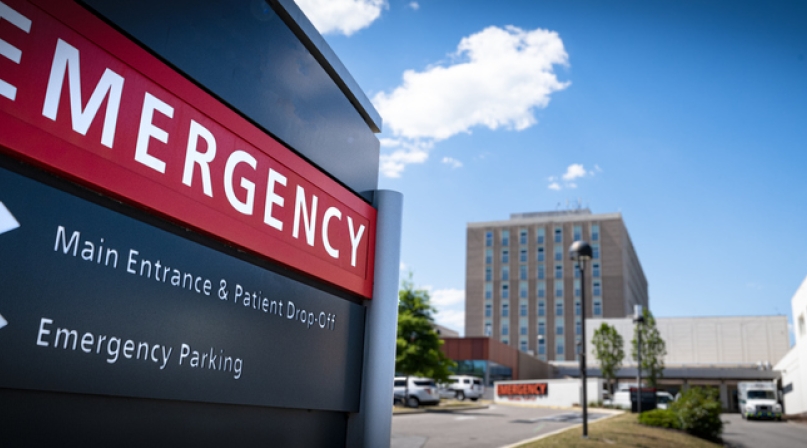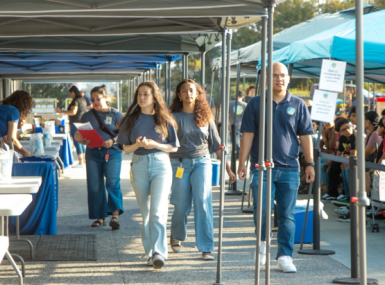HHS releases guidance on the end of the COVID-19 Public Health Emergency
Author

Blaire Bryant
Upcoming Events
Related News

Key Takeaways
On February 9, the U.S. Department of Health and Human Services (HHS) released new guidance on the agency’s plan to end the federal COVID-19 Public Health Emergency (PHE) declaration on May 11, 2023.
The national PHE declaration was first instated in March 2020 and unlocked flexibilities at the federal and local level that supported efforts to ensure access to critical health services and implement pandemic-related prevention and mitigation strategies during the height of the COVID-19 pandemic.
The guidance released last month will help health care providers, facilities, insurers and other stakeholders including counties to transition beyond the federal PHE declaration, into a long-term strategy for infectious disease mitigation and improved access to and quality of care for patients.
HHS outlined several COVID-19 PHE flexibilities and policies that have already been made permanent or otherwise extended, and those policies that will be expiring when the PHE ends in May. An overview of relevant changes for counties is below.
What will remain?
- No-cost coverage for vaccinations and certain treatments under most private insurance (out of pocket expenses for some treatments may vary by insurance)
- No-cost coverage of COVID-19 vaccinations under Medicare Part B and no-cost treatment under Medicare
- No cost coverage for vaccinations under Medicaid (treatment coverage may vary by state after September 30, 2024)
- Major Medicare and Medicaid telehealth flexibilities (Medicaid telehealth flexibilities may vary by state)
- Start date for state eligibility and redeterminations under Medicaid (March 31, 2023)
- Flexibilities related to access to medication-assisted treatment for opioid use disorder
What will expire?
- Certain Medicare and Medicaid waivers and flexibilities for health care providers
- No cost coverage of COVID-19 testing under private insurance for both over the counter and laboratory tests (cost will vary by insurance provider)
- Access to free over the counter COVID-19 tests for Medicare beneficiaries
- Mandated reporting of COVID-19 laboratory results and immunization data to the CDC
HHS has also indicated that all COVID-19 products (including tests, vaccines, and treatments) that have been approved by Emergency Use Authorization (EUA) will continue to be authorized for use and accessible to all who need them. Additionally, the agency has committed to providing continued access to pathways for EUAs for other COVID-19 products through the U.S. Food and Drug Administration (FDA).
NACo will continue to monitor federal and local activity in the coming months which will guide counties on the path toward the end of the COVID-19 PHE. As the gateway to our nation’s public health system and a key contributor to the Medicaid program, counties remain committed to ensuring ongoing access to crucial health services for our residents and will continue to serve as frontline providers of COVID-19 related prevention, mitigation and recovery services.
To learn more, view the following federal resources and guidance documents.
- HHS: COVID-19 Public Health Emergency Transition Roadmap
- CMS: CMS Waivers, Flexibilities, and the Transition Forward from the COVID-19 Public Health Emergency
- CMS: Top 10 Fundamental Actions to Prepare for Unwinding and Resources to Support State Efforts
Additional Resources
County News
When the public health emergency declaration ends, can flexibility for public assistance be retained?

Related News

National Association of Counties expands programming to build childcare supply
NACo announces the launch of its Childcare Supply Network. This new peer learning network will support local leaders in addressing childcare challenges and co-creating sustainable solutions to strengthen local childcare systems in response to workforce needs.

California county program helps spark student careers
San Diego County created a win-win program to fill open staff vacancies and give college students real-world work experience.

California county, non-profit help launch child-care startups
Adrianna Segura, a Stanislaus County, Calif. mother of two, was licensed to be a home-based child-care provider, but she didn’t know the first thing about starting a business. She knew how to take care of children, but she wasn’t sure how to file taxes, create contracts or what her rate should be.